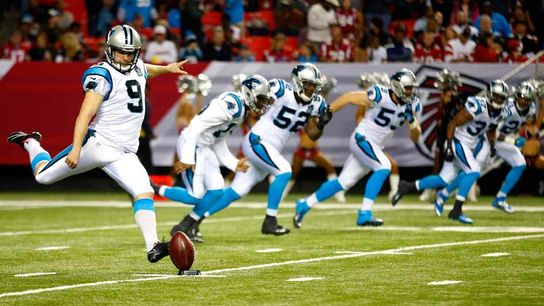Last month, the NCAA approved a new kickoff rule that allows the return team to treat a kickoff fair caught anywhere from the goal line to the 24-yard line like a touchback, moving the ball out to the 25. The change was demonstrated in this handy gif.
On Tuesday, the NFL approved new kickoff rules that take a different tactic at altering the play in the same way -- nudging return teams away from taking the ball out and accepting a touchback.
Though the NFL has made noise about eliminating the kickoff altogether if the play does not become significantly less dangerous, I think the NCAA rule will prove to be more effective at incentivizing touchbacks.
The kickoff exists on a delicate see-saw balance. If the league attempts to move the touchback line too far back toward the goal line in the aim of incentivizing touchbacks, special teams coordinators will instruct their returners to bring the ball out of the end zone to nullify that advantage. Move the ball too far the other way and NFL kickers are skilled enough to land each kick just shy of the goal line, nullifying the kicking team's advantage.
That's why, short of eliminating the rule altogether, the NCAA's rule seems like a cleaner way to achieve what both teams want to accomplish. Unless a return team has an All-American returner that can bring the ball beyond the 25 no matter where it's kicked or the kicking team has subpar coverage skills, it seems -- without having watched the rule in action -- the most common response to the NCAA rule will be to boot each ball as far as possible and concede the touchback. Which is the change both group's new rules have in mind.
(Update: NFL executive VP of football operations Troy Vincent said the goal is to create more kickoff returns, with fewer violent collisions. “What our data has said is most of those head injuries occurred up in that first 15 yards, which we call the no-blocking zone,” he told ProFootballTalk. “We believe it will reduce some of the unnecessary risk that we’ve seen in the past.”
But, starting this fall, we'll get to spend our weekends comparing and contrasting each rule's strengths and weaknesses.
